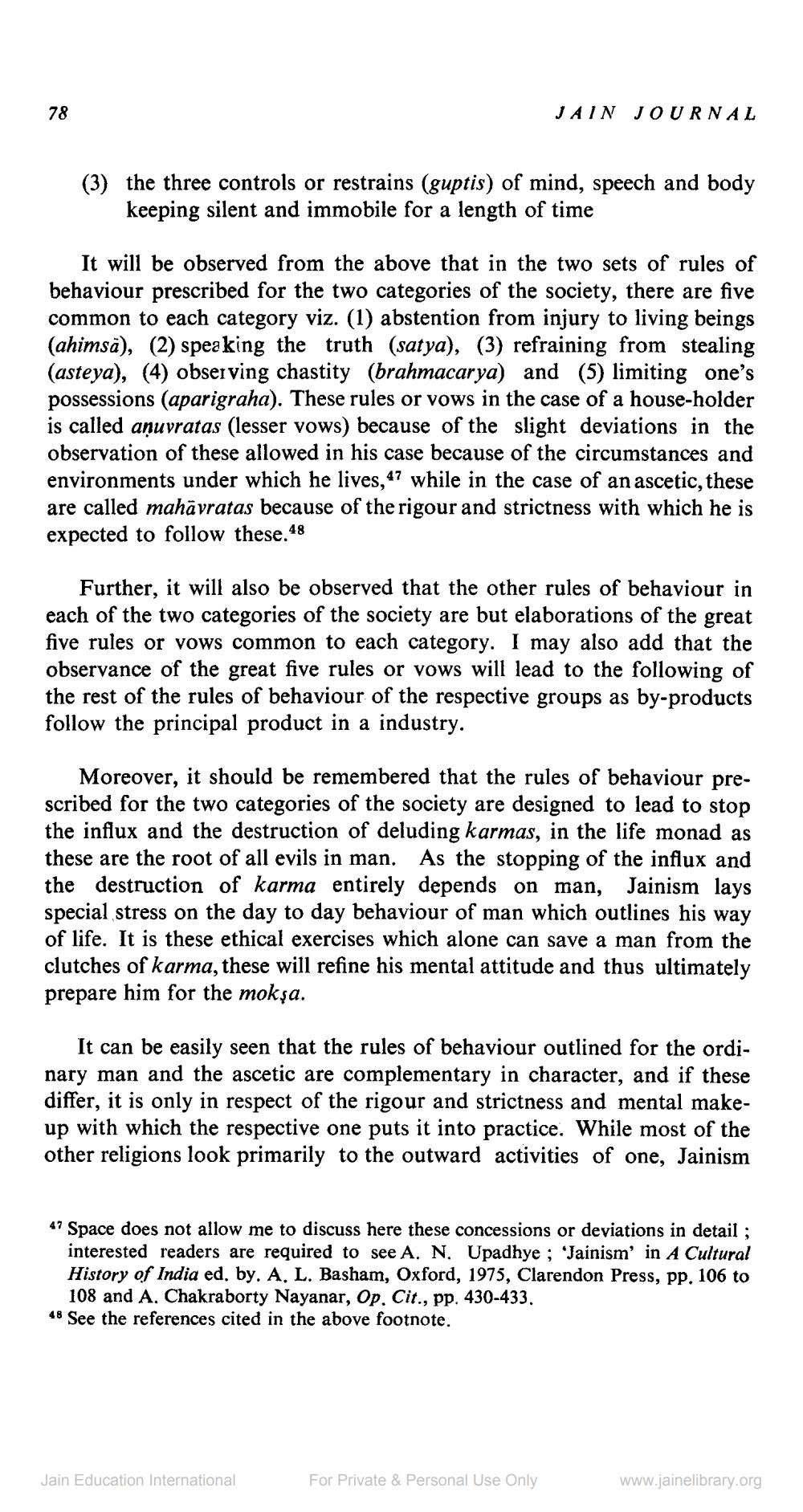________________
JAIN JOURNAL
(3) the three controls or restrains (guptis) of mind, speech and body
keeping silent and immobile for a length of time
It will be observed from the above that in the two sets of rules of behaviour prescribed for the two categories of the society, there are five common to each category viz. (1) abstention from injury to living beings (ahimsa), (2) speaking the truth (satya), (3) refraining from stealing (asteya), (4) observing chastity (brahmacarya) and (5) limiting one's possessions (aparigraha). These rules or vows in the case of a house-holder is called anuvratas (lesser vows) because of the slight deviations in the observation of these allowed in his case because of the circumstances and environments under which he lives, 47 while in the case of an ascetic, these are called mahāvratas because of the rigour and strictness with which he is expected to follow these. 48
Further, it will also be observed that the other rules of behaviour in each of the two categories of the society are but elaborations of the great five rules or vows common to each category. I may also add that the observance of the great five rules or vows will lead to the following of the rest of the rules of behaviour of the respective groups as by-products follow the principal product in a industry.
Moreover, it should be remembered that the rules of behaviour prescribed for the two categories of the society are designed to lead to stop the influx and the destruction of deluding karmas, in the life monad as these are the root of all evils in man. As the stopping of the influx and the destruction of karma entirely depends on man, Jainism lays special stress on the day to day behaviour of man which outlines his way of life. It is these ethical exercises which alone can save a man from the clutches of karma, these will refine his mental attitude and thus ultimately prepare him for the mokşa.
It can be easily seen that the rules of behaviour outlined for the ordinary man and the ascetic are complementary in character, and if these differ, it is only in respect of the rigour and strictness and mental makeup with which the respective one puts it into practice. While most of the other religions look primarily to the outward activities of one, Jainism
47 Space does not allow me to discuss here these concessions or deviations in detail ;
interested readers are required to see A. N. Upadhye ; 'Jainism' in A Cultural History of India ed. by. A. L. Basham, Oxford, 1975, Clarendon Press, pp. 106 to
108 and A. Chakraborty Nayanar, Op. cit., pp. 430-433. 48 See the references cited in the above footnote.
Jain Education International
For Private & Personal Use Only
www.jainelibrary.org




